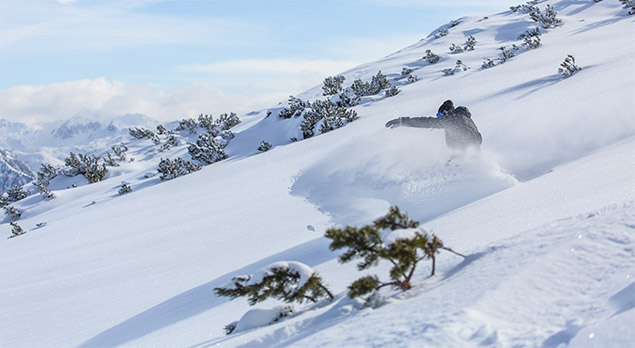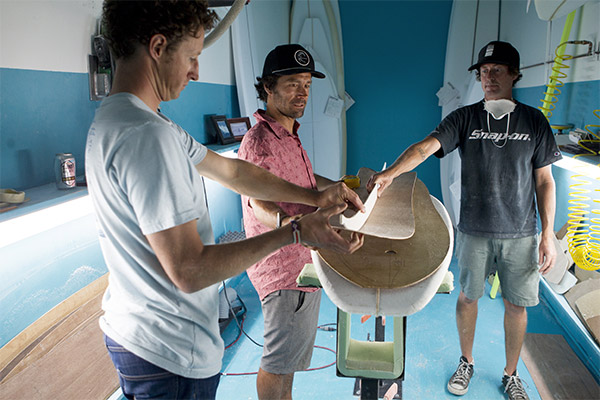What Makes A Killer Pow Board

The start of this season has been one of the best for some years with heavy snow falling across most of Europe. As a result, you’ll find excellent conditions in resorts and the opportunity to shred some powder.
When conditions are prime, having a backcountry-specific board in your quiver is a massive advantage. It lets you float above the snow, turn easier and fully enjoy the surf-like experience. We take a closer look at how these snowboards make riding powder so much fun.
Shape

The resurgence of backcountry snowboarding, euro carves, and a little bit of nostalgia has led the way for the acceptance of more radical snowboard shape design. One of the more modern and popular shapes for a powder board is a Tapered Directional with a Progressive Sidecut.
This mouthful of a shape can be broken down into three parts:
-
Tapered:
This refers to the width of the nose and the tail. The width of the tail is smaller than the nose – hence the board tapers out from the tail to the nose. The difference between the two can be subtle or can be up to a cm or two. A thin tail sinks into the snow while the wid nose lifts up - the two of them work in tandem for a floaty feel. -
Directional:
The tail is shorter in length than the nose, and the bindings are moved back towards the tail. This helps the tail sink and the nose float - while improving handling when travelling in a regular direction. The tail-heavy binding placement concentrates your weight over the back portion of the board accentuating the tail dipping and the nose lifting. Plus, it stops your legs from burning out. -
Progressive Sidecut:
The sidecut (edge curve on the side of the board) is aggressive at the contact points (at the tip and tail) before it steadily becomes more and more mellow in the middle area of the board. This makes for easy turn initiation and exit (especially on a big board) while the middle of the turn is silky smooth and steady.
![]()
Profile
A Rocker profile (convex shape) helps the snowboard float over the top of snow while camber (concave) adds power and stability. Lots of modern-day powder boards use a combination of the two profiles (hybrid) - favouring a bigger helping of rocker over camber.
Jeremy Jones explains the difference between two ends of the profile spectrum
Jones teamed up with legendary surf shaper Chris Christenson with the aim of improving the glide of their boards. Chris took inspiration from his vast back catalogue (over 20,000 surfboards) to create the Mind Expander and Lone Wolf shapes. The result is an ultra-fast profile that delivers a loose surf feel.
In addition to camber, rocker or hybrid the manipulation of the profile across the width of the board can aid performance.
-
YES Powder Hull Tech (found in the PD 420 and the 20/20)
YES created a catamaran style scoop in the front of the board, channelling snow and air down under the nose increasing lift while the same shape at the tail blows out snow, lowering the back end.
-
Jones SPOON 3D-base
The nose of the board is shaped like a spoon, hence the name. It reduces friction at the contact points allowing you to maintain more speed, eliminates edge catch and pushes more snow out of the way.
![]()
Surface Area
When a rider’s weight is spread over a large area they produce less downward pressure allowing for more float. Traditionally, manufacturers have increased surface area (S.A) by extending the length of a board. This works, but it also negatively affects the handling of the board and makes spins more difficult. A more modern approach to increasing the S.A, which has less impact on manoeuvrability, is to make the board wider around the bindings in the nose and tail.
This way you still get the same or improved S.A but the low swing weight makes it easier to control and manipulate the board.
YES’ 420 is the perfect example of a short ande wide powder board
![]()



